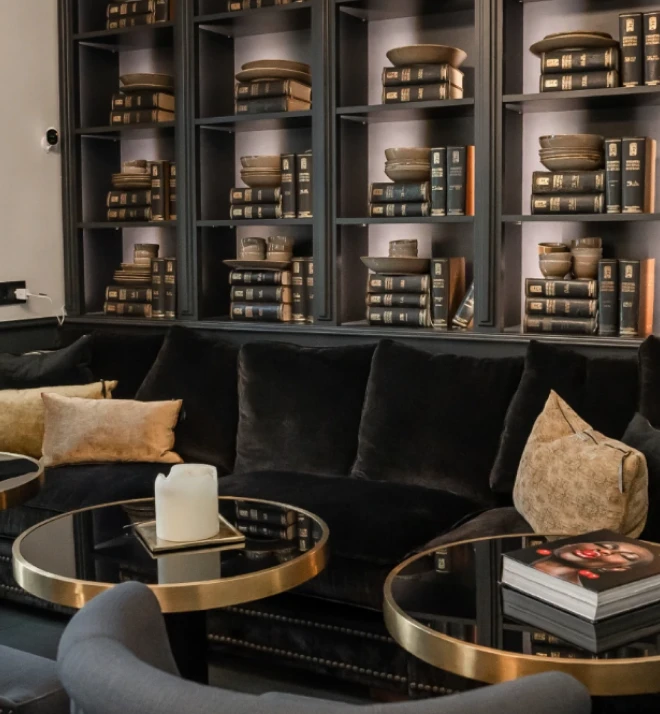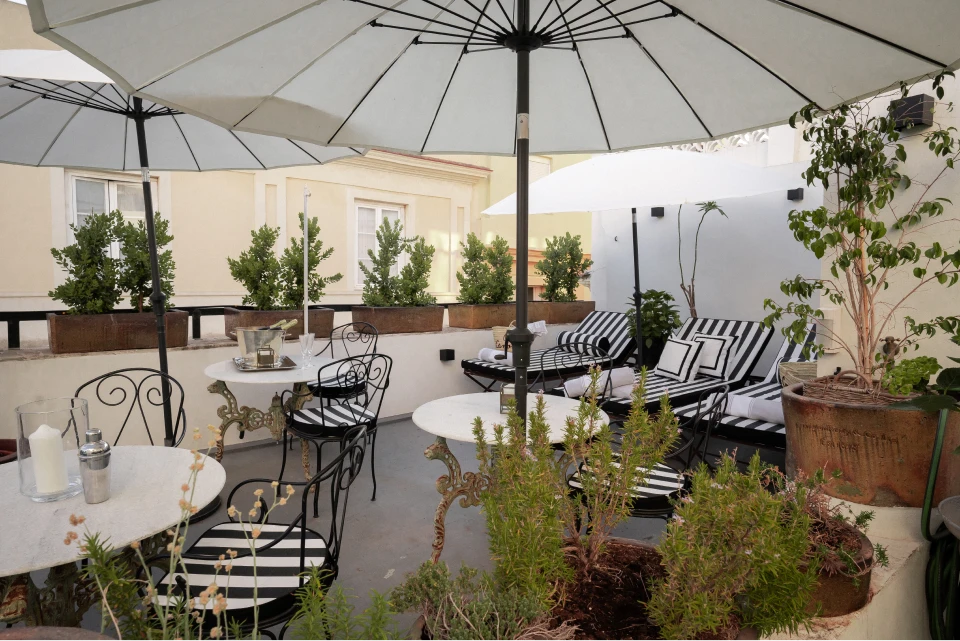The hotel, history, design and exclusivity
Lose yourself among velvets, checkerboard marble, historic and contemporary furniture in the heart of the old quarter of the capital of Cádiz.
The LUZIO interior design studio, together with the owner Ninfa Delfín, give life to ten rooms with their own personality distributed over four floors that revolve around a typical interior patio of Andalusian stately homes.
Black polished concrete floors, anthracite woodwork, baroque-style headboards, antique brass lamps and antique chests of drawers.

The difference is in the details
A small hotel different from the rest where nothing has been left to chance. From the decoration to the intimate atmosphere. Everything is designed so that our guests can enjoy the peace and quiet they deserve.
Enjoy 300-thread-count Egyptian cotton sheets on mattresses made from silk and other natural fibres. Lose track of time in one of our rooms with an exclusive Devon & Devon bathtub that reinvents the pleasure of the bathing ritual.


In the heart of Cádiz
We are in the heart of Cádiz, where you can get to know one of the oldest cities in the West and enjoy the most sybaritic gastronomy or, why not, the most typical one. We are just a few steps away from the most commercial streets and only 10 minutes away from the most spectacular beaches of Cádiz, enjoy it!
We are a destination for the discerning aesthete. Read leisurely as you recline by the bookcase in our lounge and bid farewell to the day on our private terrace.
The hotel and its legend
The massacre of 10 March 1820. That day in Cádiz there were more than 60 dead, 148 wounded and 362 robberies, in an event that began when the troops opened fire on the crowd in the Plaza de San Antonio. One of the wounded was the famous smuggler "EL PÁJARO AZUL", from which comes the name of the old tablao bodega and modern archaeology recently inaugurated in San Juan street (next to the cathedral and meeting place between the 60s and 70s). A forbidden place in our childhood.
The mortally wounded smuggler took refuge in a house at the end of Cánovas street, protected by a good family. He abandoned the crime of smuggling and dedicated himself to doing good. He went to the Americas and disappeared. It is thought that he received help and his cure at number 32 of the aforementioned street. On his smuggler's emblem attached to his monk's robes he wore a lynx...

